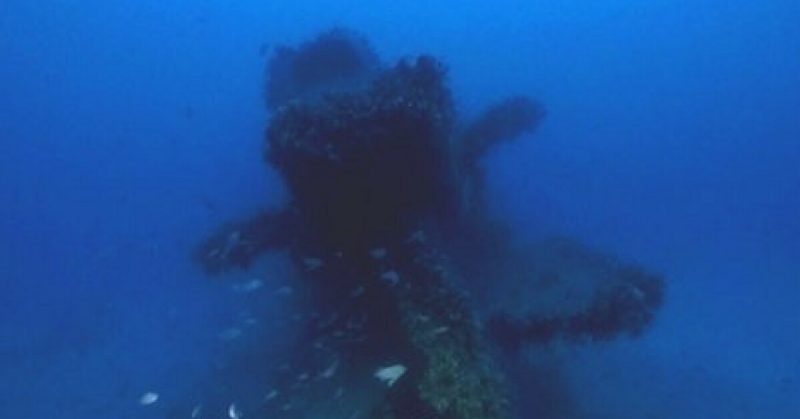It is always such a sad occasion when a mass grave is located – wherever it is and whoever lies within – but there is something particularly poignant about a mass grave discovered beneath the sea.
Such a discovery was made in May 2016. The wreck of a British WWII submarine, the HMS P311, which had been missing with all hands since January 1943, was found submerged, just off the coast of Sardinia. The submarine seemed to have sustained little damage other than a large hole caused, it is assumed, when she hit a mine. Since she seems to have remained in the position in which she sank, it seems most probable that the crew all died as a result of a lack of oxygen.
This is the opinion of the experienced diver and wreck-hunter, Massimo Bordone, who came across the wreck this year. “It looks as if she went down with air sealed inside … It’s important to have the utmost respect for wrecks in cases like this,” he said.
The P311, a British T-class submarine, was built by Vickers-Armstrong in Barrow. She had a length of approximately 84 meters and a beam of almost 8 meters, with twin diesel engines as well as twin electric motors. She was the only boat of her class ( T = Triton) not to have been officially given her name – Tutankhamen. This name had been minuted by Churchill on 27th December 1942, but there had been no time to officially assign the name to the submarine, so she remained the P311.
Late in 1942, the P311 was sent to join the 10th Flotilla in Malta She was under the command of Richard D. Cayley, (known by his nickname – Deadeye Dick,) a submarine commander of some distinction, having been awarded the D.S.O. in 1941. There the submarine received orders for its first mission – a particularly dangerous one – code named Operation Principle. They were to sink two Italian ships, both gun cruisers, which were located in the harbor of La Maddalena on the Island of Sardinia.
Strapped to the decks of the P 311, were two chariots. Their highly trained crews joined the crew on board the submarine. The total number of men aboard is said to have been 71, made up of the submarine crew of 61 and the 10 engineers and crewmen who tended the chariots. The submarine had to get in close enough to the target to enable the chariots to do their work.
The chariots were manned torpedoes, each requiring a crew of two expert frogmen. These were the men who had to maneuver the chariots under water, make their way into the harbor, approach the Italian ships, affix the mines or explosives to the ships’ hulls, and then maneuver the chariots back to the submarine.
The last message received from the P311 was while she was underway, on the 30th December 1942. Nothing more was ever heard from her, so by the 8th of January 1943, when she had not returned from her mission, the P311 was assumed to have gone down with all hands. This – with Bordone’s discovery of this still sealed wreck, proved to be the truth. The submarine was found lying at a depth of 100metres, close to the Island of Travolara. It is thus surmised that, en route to La Maddalena, and while sailing through the Straits of Bonifacio, the P311 was hit by a mine somewhere northeast of Sardinia and thus came to her final place of rest.
This tragedy happened more than 73 years ago and was one of many similar events which occurred during WWII. While there are probably very few relatives still living that would have personally remembered any of the crew members, there are sure to be close family descendants of these crewmen who would feel a sense of closure; they know at last where this particular submarine, the HMS P311 – together with its full complement of crewmen – now rests.
The Royal Navy is quoted as having stated that neither the submarine nor the bodies of the crewmen would be likely to be removed from that final resting place as, “Wrecks are only raised if there are extremely compelling historical or operational reasons to do so … Once a military vessel sinks it becomes a war grave and is left where it lies.”
May they all continue to Rest in Peace.
